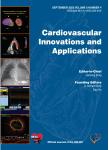Analysis of Coronary Angiography Video Interpolation Methods to Reduce X-ray Exposure Frequency Based on Deep Learning
作者机构:The Future LaboratoryTsinghua UniversityChengfu Road 160HaidianBeijingChina Center for CardiologyBeijing Anzhen HospitalCapital Medical UniversityAnzhen RoadBeijingChina The First Affi liated Hospital of Zhengzhou UniversityJianshe East RoadErqi DistrictZhengzhouChina
出 版 物:《Cardiovascular Innovations and Applications》 (心血管创新与应用(英文))
年 卷 期:2021年第6卷第3期
页 面:17-24页
学科分类:1002[医学-临床医学] 100201[医学-内科学(含:心血管病、血液病、呼吸系病、消化系病、内分泌与代谢病、肾病、风湿病、传染病)] 10[医学]
主 题:coronary angiography video interpolation deep learning X-ray exposure frequency
摘 要:Cardiac coronary angiography is a major technique that assists physicians during interventional heart *** X-ray irradiation,the physician injects a contrast agent through a catheter and determines the coronary arteries’state in real ***,to obtain a more accurate state of the coronary arteries,physicians need to increase the fre-quency and intensity of X-ray exposure,which will inevitably increase the potential for harm to both the patient and the *** the work reported here,we use advanced deep learning algorithms to fi nd a method of frame interpola-tion for coronary angiography videos that reduces the frequency of X-ray exposure by reducing the frame rate of the coronary angiography video,thereby reducing X-ray-induced damage to *** established a new coronary angiography image group dataset containing 95,039 groups of images extracted from 31 *** group includes three consecutive images,which are used to train the video interpolation network *** apply six popular frame interpolation methods to this dataset to confi rm that the video frame interpolation technology can reduce the video frame rate and reduce exposure of physicians to X-rays.



